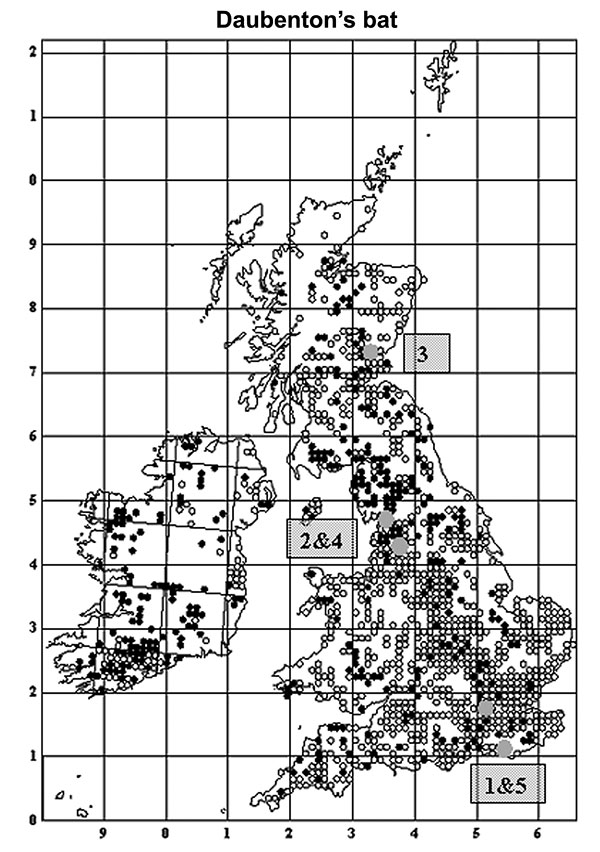Volume 11, Number 4—April 2005
Research
European Bat Lyssavirus in Scottish Bats
Figure 1

Figure 1. Distribution of Daubenton bats in the United Kingdom and Ireland showing 5 cases of infection with European Bat lyssavirus type 2 (EBLV-2). Open circles are sites where Daubenton’s bats were observed away from their roosts, and the closed circles are roosts of Daubenton bats (summer and winter). The 5 numbered gray circles are sequential sites where EBLV-2–positive cases were found. Reprinted with permission of The Bat Conservation Trust (London, United Kingdom) from Distribution of Bats in Britain and Ireland 1980-1999.
Page created: May 23, 2011
Page updated: May 23, 2011
Page reviewed: May 23, 2011
The conclusions, findings, and opinions expressed by authors contributing to this journal do not necessarily reflect the official position of the U.S. Department of Health and Human Services, the Public Health Service, the Centers for Disease Control and Prevention, or the authors' affiliated institutions. Use of trade names is for identification only and does not imply endorsement by any of the groups named above.